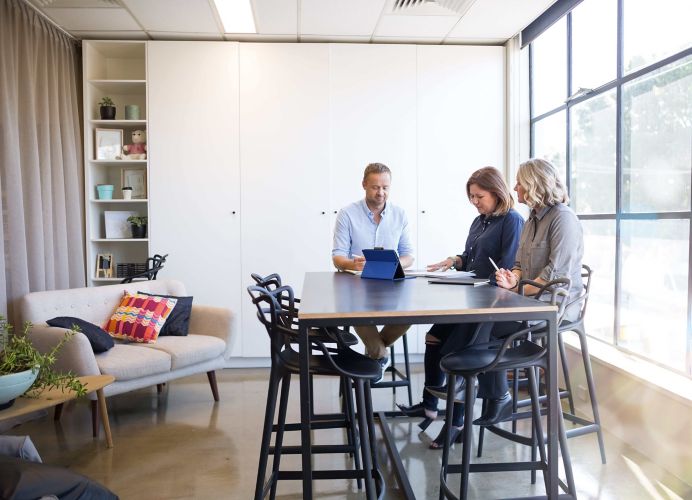Our legacy
Inspired by our previous winners

Meet some of our past Winners
2019 Social Change Maker Award
Bush Medijina
Bush Medijina started with an empty shipping container and a big dream inspired by the female elders of Groote Eylandt, an island off the coast of the Northern Territory.

2019 Entrepreneur Award
Love To Dream
When Hana-Lia Krawchuk gave birth to her first child, the sleep-deprivation and exposure to continuous crying led her to launch Love To Dream.
2020 Small Business Award
LVLY
In 2015, while working in the advertising industry, Hannah Spilva co-founded online flower gifting company LVLY. Setting out to challenge the floristry industry, LVLY has since become famous for its cheeky brand and convenient same day delivery service.
2019 Medium & Making Waves Award
Mollydooker Wines
In the heart of South Australia's McLaren Vale, Mollydooker Wines is turning the wine industry upside down. Quite literally, their most innovative technique involves tipping their bottles upside down and shaking them.
2018 Emerging & Energised Award
Scoot Boots
When businesses disrupt an industry, it's rarely one that has stayed the same for over 1,500 years. But that's exactly what Scoot Boots is doing by challenging the idea of the metal horseshoe.
2019 Emerging & Energised Award
STEM Punks
It's not often you associate science with fun, but that was exactly Michael Holmstrom's mission. He created STEM Punks, a group of passionate educators helping to inspire kids and adults to learn about science, technology, engineering and mathematics (STEM) in a fun and interactive environment.
2018 Medium & Making Waves Award
Unios
When Paley Ho founded Unios from his hometown of Perth, he set out to circuit break Australia's commercial lighting industry. It was heavily footed in New South Wales and Victoria, so he shone a light on what could be done from WA.

2019 Small & Succeeding Award
Water Tight Canberra
In 2010, Water Tight Canberra owner, Tom Martin created a business committed to delivering seamless and ethical residential and strata plumbing services. With a pledge to provide the highest customer service, Tom and his team saw the value in communicating well with clients.
Have a question?
Find answers to your frequently asked questions.
Contact us
Speak with our Awards Team and call 1800 AWARDS Monday - Friday 9am - 5pm (AEDT).